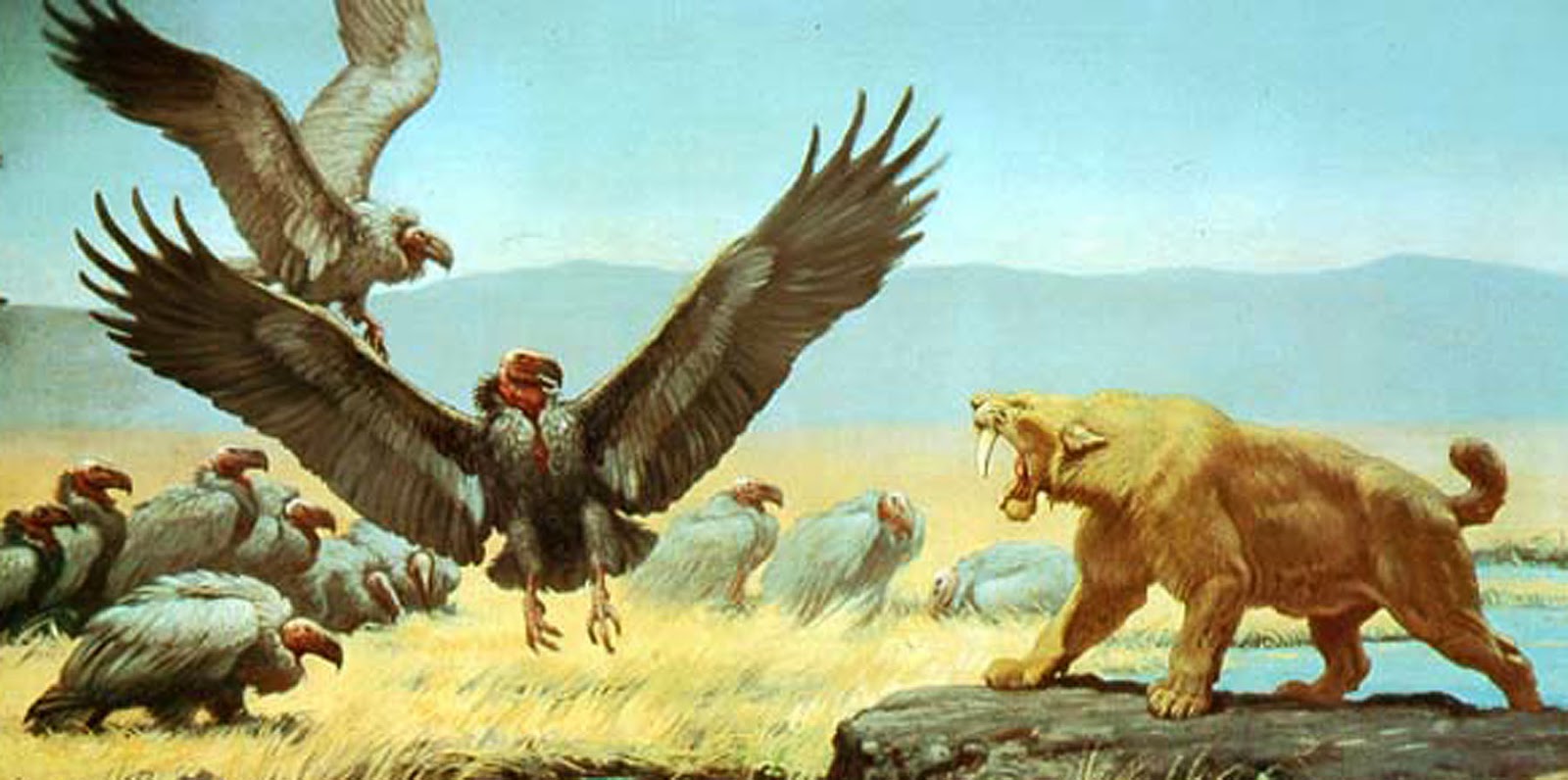
Mention megafauna and your imagination probably leaps to Africa with its vast herds of elephant, lumbering rhino and majestic giraffe. But if you thought Africa was the only place where magnificent mammals had evolved then you’d be wrong. Barely a moment ago in geological time giants roamed North America too, as well as many other parts of the world.
In fact, up until recently, places like Texas might have been top safari destinations, with huge densities or large bodies animals. Theories abound as to what caused their dramatic and sudden disappearance, but the fact that it coincided with the probable arrival of humans tells a compelling story in of itself.

Here’s a brief step back in time to see the monsters that our ancestors faced and that we’ve all too quickly forgotten since.
The Florida cave bear

Endemic to North America and present up until about 11,000 years ago, its range stretched from Florida to California. It weighed up to around 650lbs, about the size of an average brown bear. It’s closest living relative is the spectacled bear of the Andes.
The ancient bison

If you think modern bison were big, well this beast was even bigger. Weighing up to 3500lbs, it was abundant up until around 10,000 years ago across northern North America, with modern bison being a direct descendent. It is likely that this species was a major food source of First Nations people.
Chasmaporthetes

Also known as the running hyena, this species ranged across Arizona and Mexico up until around 800,000 years ago. This species was probably more similar to the cheetah in behaviour, than modern Hyena. The only surviving relative is the Aardwolf.
Eremotherium

The Eremotherium is a group of giant ground sloths, and when we say giant, we mean GIANT. A world away from the modern sloths of South America, these monsters grew to six metres tall and weighed more than three tons. There were several species, the most recent of which E. laurillardi went extinct just 11,000 years ago.
The Saber-toothed cat

There were several species, the most famous of which is Smilodon. Made legendary by their enormous protruding canines up to 11 inches long, these cats were larger than any living species. Scientists believe it was most likely a daytime hunter, specialising on large herbivores like bison and camels. Their extinction was possibly due to humans hunting out many of their prey species.
Woolly mammoth

Many extinct species are only known from fossilised remains, but not so with the iconic wooly mammoth—incredibly preserved frozen carcasses have been found in Siberia and Alaska. Well adapted to the cold, it’s thought that it went extinct across much of its range around 10,000 years ago, but we know that a small isolated population clung on at Wrangle island until just 4000 years ago.
Teratornis

A huge North American bird of prey, the remains of more than 100 have been found across California, Nevada and Arizona. With a wingspan of up to 12 feet, it would have been larger than modern condors. As a scavenger of large mammals, this is yet another species that possibly went extinct as a result of herbivore hunting by humans.
The Dire Wolf

Once common in North and South America, this species was even larger and more fearsome than the modern Grey wolf. It is likely that their size was their downfall, being slower than other wolves they could not keep up with smaller prey as the larger mammals died out. A pack of Dire wolves would have been a sight to behold.
Camelops

Yes, there were camels too. Very similar to the modern Bactrian Camel, these mammals would have been a common sight. Some of the remains found by scientists exhibit the marks of stone tool hunting. They appear to have gone extinct around 11,000 years ago.
Glyptodon

Last, and perhaps most impressive, is the giant armadillo the size of a car. Lumbering across Mexico and the Southern U.S. just 10,000 years ago, these were likely easy targets for hunter-gatherers. We can only imagine that it would have fed a family for months!
We can only wonder what North America must have looked like just a few Millenia ago. But while we might lament their disappearance, we should remember that there are still corners of the world where iconic megafauna persist, and we should strive to protect them.
